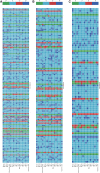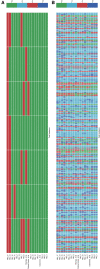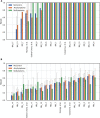A summary of the ComParE COVID-19 challenges
- PMID: 36969956
- PMCID: PMC10031089
- DOI: 10.3389/fdgth.2023.1058163
A summary of the ComParE COVID-19 challenges
Abstract
The COVID-19 pandemic has caused massive humanitarian and economic damage. Teams of scientists from a broad range of disciplines have searched for methods to help governments and communities combat the disease. One avenue from the machine learning field which has been explored is the prospect of a digital mass test which can detect COVID-19 from infected individuals' respiratory sounds. We present a summary of the results from the INTERSPEECH 2021 Computational Paralinguistics Challenges: COVID-19 Cough, (CCS) and COVID-19 Speech, (CSS).
Keywords: COVID-19; Digital Health; computer audition; deep learning; machine learning.
© 2023 Coppock, Akman, Bergler, Gerczuk, Brown, Chauhan, Grammenos, Hasthanasombat, Spathis, Xia, Cicuta, Han, Amiriparian, Baird, Stappen, Ottl, Tzirakis, Batliner, Mascolo and Schuller.
Conflict of interest statement
The authors declare that the research was conducted in the absence of any commercial or financial relationships that could be construed as a potential conflict of interest.
Figures













References
-
- Brown C, Chauhan J, Grammenos A, Han J, Hasthanasombat A, Spathis D, et al. Exploring automatic diagnosis of COVID-19 from crowdsourced respiratory sound data. In ACM SIGKDD International Conference on Knowledge Discovery & Data Mining; New York, NY, USA. Association for Computing Machinery (2020). p. 3474–84. Available from: 10.1145/3394486.3412865. - DOI
-
- Xia T, Han J, Qendro L, Dang T, Mascolo C. Uncertainty-aware COVID-19 detection from imbalanced sound data. arXiv. (2021) [preprint]. 10.48550/ARXIV.2104.02005 - DOI
-
- Sharma N, Krishnan P, Kumar R, Ramoji S, Chetupalli SR, Ghosh NRPK, et al. Coswara—a database of breathing, cough,, voice sounds for COVID-19 diagnosis. In Proceedings INTERSPEECH 2020; Shanghai, China. ISCA (2020). p. 4811–15. Available from: 10.21437/Interspeech.2020-2768 - DOI
-
- Bagad P, Dalmia A, Doshi J, Nagrani A, Bhamare P, Mahale A, et al. Cough against COVID: evidence of COVID-19 signature in cough sounds. arXiv (2020) [preprint]. 10.48550/arXiv.2009.08790 - DOI
LinkOut - more resources
Full Text Sources

